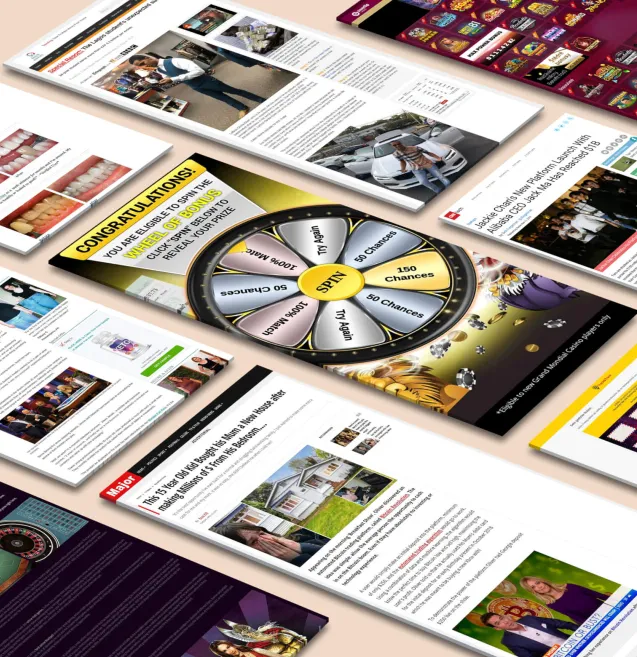
Our tools monitor millions of native, push, pop, and TikTok advertising campaigns.
Get StartedThe Rise of Micro-Influencers in Affiliate Marketing has transformed how brands approach digital marketing partnerships. Micro-influencers are social media personalities who maintain follower counts between 1,000 and 100,000. This specific range positions them in a sweet spot where they can maintain genuine relationships with their audience while still offering meaningful reach for TikTok-creator-fund-explained-start-earning-today" target="_blank" rel="noreferrer noopener">brand partnerships.
The distinction between micro and macro-influencers goes beyond simple follower numbers. Macro-influencers, with their hundreds of thousands or millions of followers, cast a wide net across diverse demographics. Micro-influencers operate differently—they cultivate niche audiences centered around specific interests, lifestyles, or product categories. A micro-influencer might focus exclusively on sustainable fashion, budget travel, or plant-based cooking, attracting followers who share these precise passions.
This specialization creates something macro-influencers often struggle to achieve: follower engagement that translates into action. When you have 5,000 followers who genuinely care about your recommendations on eco-friendly skincare, your affiliate links carry weight. Your audience trusts you because you've demonstrated expertise and authenticity in your niche. They don't just scroll past your content—they comment, share, and most importantly, click through to make purchases.
The significance of these highly engaged communities cannot be overstated. Micro-influencers build relationships, not just follower counts, creating the perfect environment for affiliate marketing success. This shift towards micro-influencer partnerships is backed by research indicating that micro-influencers often yield higher engagement rates and conversion, making them an invaluable asset in the affiliate marketing landscape.
Micro-influencers build authentic connections with their audiences in ways that larger influencers simply cannot replicate. When you have 5,000 followers instead of 5 million, you can respond to comments personally, engage in meaningful conversations, and maintain genuine relationships. This authenticity translates directly into higher trust levels—followers view micro-influencers as peers rather than distant celebrities.
The numbers tell a compelling story. Micro-influencers consistently achieve engagement rates between 3-7%, while macro-influencers often struggle to reach even 1-2%. You're not just getting more likes and comments; you're getting meaningful interactions from people who genuinely care about the content. When a micro-influencer recommends your product, their followers listen because they've built credibility through consistent, honest communication.
Targeted marketing becomes remarkably precise with micro-influencers. A beauty micro-influencer who specializes in cruelty-free skincare attracts followers specifically interested in that niche. When they promote your vegan moisturizer through an affiliate link, you're reaching exactly the audience most likely to convert. Compare this to a macro-influencer whose broad audience might include people with zero interest in your product category.
This deep connection with specific niche markets creates a powerful advantage. Micro-influencers understand their audience's pain points, preferences, and purchasing behaviors intimately. They speak the language of their community, share relevant experiences, and provide recommendations that feel like advice from a trusted friend rather than a paid advertisement.
Cost-effectiveness stands as one of the most compelling reasons brands are pivoting toward micro-influencer partnerships. While macro-influencers command fees ranging from thousands to hundreds of thousands of dollars per post, micro-influencers typically charge between $100 to $500 per sponsored content piece. This dramatic price difference allows brands to stretch their marketing budgets significantly further, accessing multiple voices instead of investing heavily in a single celebrity endorsement.
The scalability potential transforms how brands approach affiliate marketing campaigns. You can partner with 20 micro-influencers for the same budget you'd spend on one macro-influencer. This diversified approach spreads your brand message across multiple niche communities simultaneously, creating a ripple effect that reaches different audience segments. Each micro-influencer brings their unique audience demographics, interests, and engagement patterns, multiplying your campaign's reach and impact.
Long-term partnerships with micro-influencers create sustained brand loyalty that transcends individual campaigns. When you work with the same influencers over extended periods, they become genuine brand advocates who naturally integrate your products into their content. Their followers witness authentic, repeated endorsements rather than one-off promotional posts. This consistency builds credibility and trust that translates directly into higher conversion rates. Micro-influencers invested in ongoing relationships are more likely to provide valuable feedback, create better content, and maintain enthusiasm for promoting your products across multiple campaigns.
Influencer discovery tools have transformed how brands identify the right partners for their campaigns. Platforms like AspireIQ, Upfluence, and CreatorIQ allow you to filter potential collaborators based on audience demographics, engagement rates, content style, and niche relevance. You can analyze an influencer's authenticity by examining their follower growth patterns, comment quality, and audience overlap with your target market. These tools eliminate guesswork and help you find micro-influencers whose values align with your brand identity.
Campaign goals must be specific and measurable from the start. You need to determine whether you're prioritizing brand awareness, direct sales, email list growth, or product reviews. Each objective requires different affiliate structures and content approaches. A campaign focused on conversions might offer higher commission rates, while awareness campaigns could emphasize creative freedom and storytelling opportunities.
The rise of micro-influencers in affiliate marketing has created competitive landscapes where attractive incentives matter. You should design compensation packages that combine:
You can test different incentive models with small groups before scaling successful approaches across your entire micro-influencer network.
Social media platforms have transformed from simple networking sites into full-fledged shopping destinations. Instagram Shopping, Facebook Marketplace, TikTok Shop, and Pinterest's buyable pins now allow users to discover, browse, and purchase products without leaving their favorite apps. This shift toward social commerce creates perfect conditions for social media influencers for affiliate marketing to thrive, as the path from product discovery to purchase becomes seamless.
Live-stream shopping events have changed how consumers interact with products online. When micro-influencers host live shopping sessions, they create real-time, interactive experiences where followers can ask questions, see products in action, and receive immediate responses. These events generate urgency and excitement that static posts cannot match. You'll find conversion rates from live-stream shopping often exceed traditional e-commerce by significant margins, with some brands reporting increases of 30% or more during these events.
The authentic user-generated content that micro-influencers produce naturally fits into their followers' feeds without feeling like intrusive advertising. When a micro-influencer shares their genuine experience with a product through Stories, Reels, or regular posts, their audience perceives it as a trusted recommendation from a friend rather than a corporate marketing message. This authenticity translates directly into higher click-through rates on affiliate links and improved conversion metrics. Brands can repurpose this content across their own channels, multiplying the value of each micro-influencer partnership while maintaining that crucial authentic voice.
To effectively monitor the performance of your influencer affiliate partnerships, you need robust affiliate tracking software. Platforms like Refersion, Impact, and Post Affiliate Pro allow you to generate unique affiliate links for each micro-influencer, tracking clicks, conversions, and sales attributed to their promotional efforts. These tools provide real-time dashboards where you can see exactly which influencers drive the most revenue for your brand.
An excellent example of a platform that offers comprehensive affiliate tracking features is Anstrex. Their affiliate program allows for significant earnings from referred customers, providing a lucrative opportunity for both brands and influencers involved.
Performance metrics form the backbone of campaign evaluation. You should focus on these key indicators:
ROI analysis becomes straightforward when you have accurate data from your tracking systems. You can compare the performance of different micro-influencers, identifying which partnerships deliver the strongest returns. This data-driven approach helps you allocate budget more effectively, doubling down on high-performing collaborations while adjusting strategies for underperforming ones.
Data analytics reveal patterns in customer behavior, purchase timing, and product preferences. You can use these insights to refine your messaging, adjust promotional periods, and select micro-influencers whose audiences align better with your target demographics.
The world of micro-influencer affiliate marketing is about to undergo a major change, thanks to new technology and changing consumer habits.
AI advancements are changing the way brands find and target influencers. With the help of machine learning algorithms, brands can now analyze engagement patterns, audience demographics, and content performance more accurately than ever before. This means that brands will soon be able to use AI-powered platforms to predict which micro-influencers will deliver the best return on investment (ROI) for specific product categories before they even launch their campaigns. These systems will be able to evaluate authenticity metrics, detect fake followers, and match brand values with influencer personas in a matter of seconds instead of hours.
Enhanced data analytics capabilities are improving the precision of marketing campaigns beyond just looking at basic numbers. Predictive analytics tools are now able to forecast conversion rates by analyzing past influencer performance, audience sentiment analysis, and seasonal trends. This means that brands will soon have access to platforms that offer real-time optimization suggestions and automatically adjust affiliate commission structures based on performance data. Additionally, sentiment analysis tools will be able to decode audience reactions to sponsored content, giving brands insights into why certain posts are more successful than others.
The rise of micro-influencers in affiliate marketing shows no signs of slowing down. Industry projections indicate that brands will allocate 40-50% of their influencer marketing budgets to micro-influencer partnerships by 2026. This shift in strategy reflects the understanding that these smaller creators have a more engaged and loyal following compared to larger influencers.
The role of micro-influencers is also evolving beyond just promoting products. They are becoming strategic brand partners who co-create products, provide market insights, and shape brand narratives. This means that your affiliate marketing strategy with micro-influencers needs to adapt to this shift towards deeper and more collaborative relationships.
As technology continues to advance and consumer preferences evolve, it's crucial for brands to stay ahead of the curve in order to effectively leverage micro-influencer affiliate marketing.
The rise of micro-influencers in affiliate marketing represents a significant change in how brands approach digital partnerships. In the ever-changing world of affiliate marketing, being genuine and authentic in your marketing efforts is more important than having a large number of followers.
You've seen the data: micro-influencers deliver higher engagement, better conversion rates, and more meaningful relationships with their audiences. These aren't just statistics—they're proof that consumers crave real voices they can trust.
The opportunity is clear. Influencer partnerships with micro-creators offer you cost-effective scalability, niche market access, and the authentic storytelling your brand needs to stand out. The brands winning today are those investing in multiple micro-influencer relationships rather than betting everything on a single celebrity endorsement.
Start building your micro-influencer strategy now. The future of affiliate marketing belongs to brands that prioritize meaningful connections.
Receive top converting landing pages in your inbox every week from us.
How-To
The holiday season offers unmatched opportunities for affiliates to maximize earnings. Learn how to craft a year-end strategy that leverages limited-time offers, seasonal trends, and audience insights. Discover actionable ways to optimize campaigns and boost conversions before the year closes. Perfect for affiliates looking to turn festive traffic into lasting revenue.
Samantha Reed
7 minDec 6, 2025
Tips & Tricks
Year-end is the perfect time to refine your affiliate marketing approach and boost conversions. Learn five proven strategies to optimize campaigns, enhance ad performance, and take advantage of seasonal buyer intent. Discover actionable tips to maximize revenue and end the year on a high note. Perfect for affiliates ready to turn Q4 momentum into measurable success.
David Kim
7 minNov 25, 2025
Tips & Tricks
This blog shares proven strategies to help affiliates increase their sales before the year ends. It covers actionable tips on optimizing campaigns, leveraging seasonal trends, and refining ad creatives for higher conversions. Readers will discover how to make the most of Q4 opportunities and finish the year strong. Perfect for affiliate marketers aiming to maximize profits during the busiest shopping season.
Priya Kapoor
7 minNov 22, 2025




